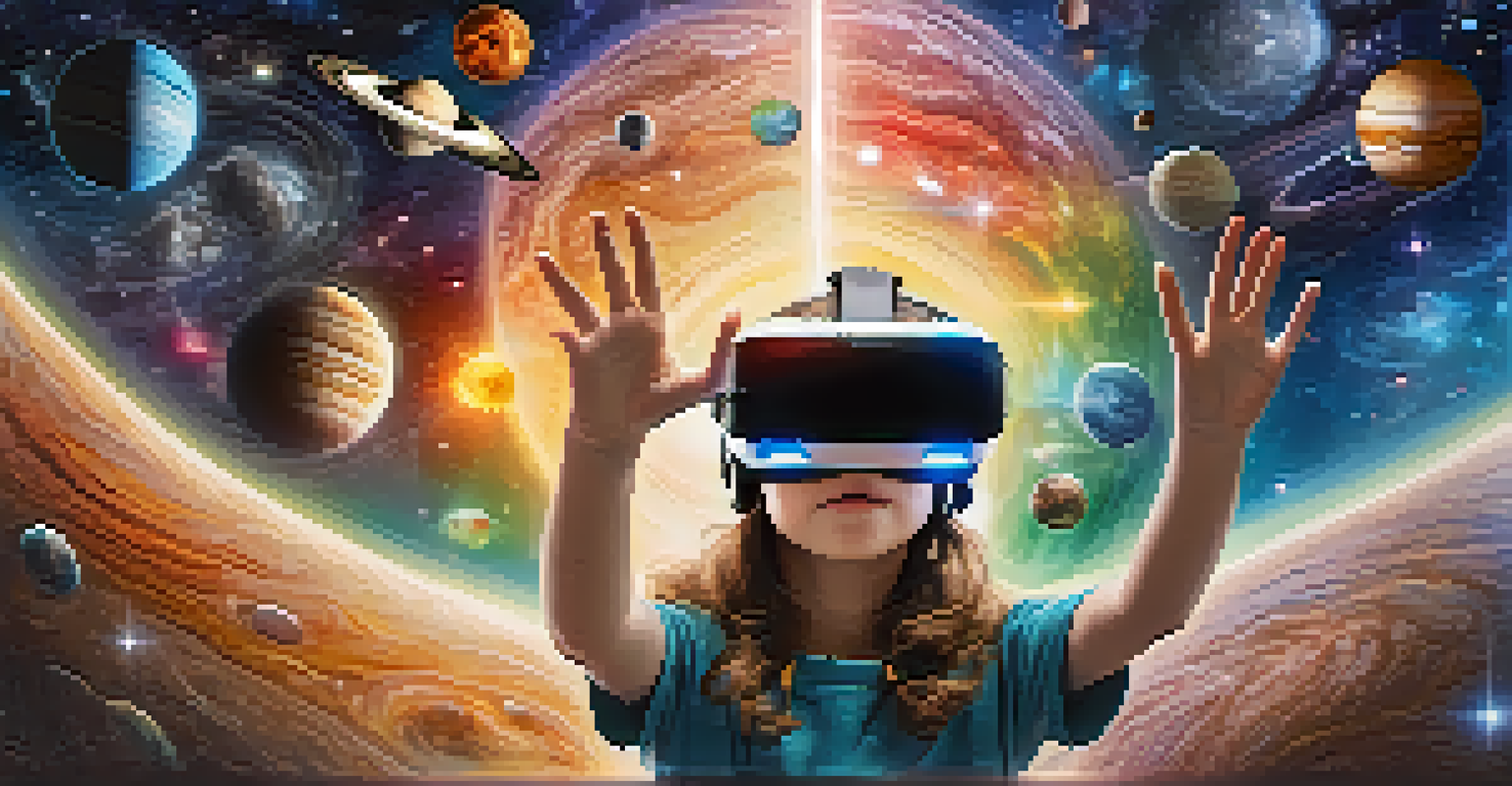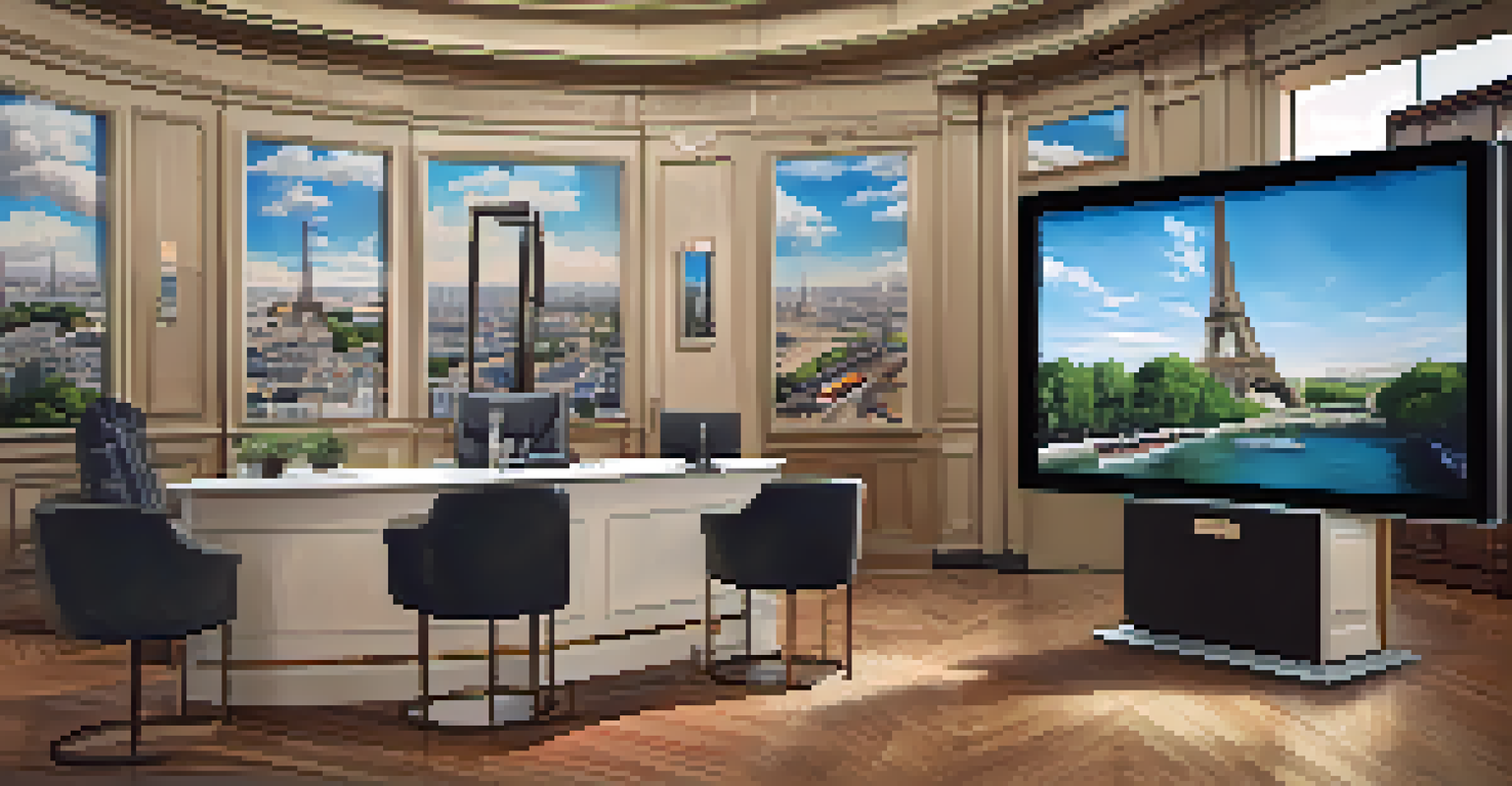Virtual Reality: A New Way to Experience Destinations

What is Virtual Reality and How Does it Work?
Virtual Reality (VR) is an immersive technology that creates a simulated environment, allowing users to experience places as if they were actually there. By wearing a VR headset, users can explore virtual destinations, interact with 3D objects, and even engage in activities like hiking or diving. This technology uses a combination of hardware, like sensors and motion trackers, and software to create realistic experiences.
Virtual reality is the first step in a grand adventure into the landscape of the imagination.
Imagine walking through the bustling streets of Tokyo without leaving your living room or standing atop the Eiffel Tower while sipping your morning coffee. VR allows you to travel the world from the comfort of your home, offering a unique way to experience destinations that may be out of reach. The sense of presence created by VR can make these experiences feel incredibly lifelike.
As VR technology continues to evolve, it becomes increasingly accessible and affordable, making it a viable option for travel enthusiasts. The ability to explore new places virtually can inspire future trips, helping users decide where to go next. So, let’s dive deeper into how VR is changing the way we experience travel.
Virtual Reality in Travel: A Game Changer
Travel agencies and tourism boards are embracing VR as a marketing tool to give potential travelers a taste of their destinations. For example, a user can take a virtual tour of a tropical resort, experiencing the beach and amenities before booking their stay. This immersive preview can make a significant difference in a traveler’s decision-making process.

Moreover, VR can enhance the travel experience itself. Imagine visiting a historical site where you can see how it looked centuries ago, complete with animated figures and sounds of the past. This interactive storytelling approach not only educates but also entertains, making history come alive in a way that textbooks never could.
VR Transforms Travel Experiences
Virtual reality enhances travel by allowing users to explore destinations and cultural experiences from home.
As VR becomes more integrated into travel planning, it also offers opportunities for personalization. Users can tailor their virtual experiences based on interests, whether they want to explore art galleries, go on a food tour, or hike scenic trails. This level of customization adds a new dimension to travel experiences, making VR an essential tool in the industry.
Traveling Virtually: Benefits and Drawbacks
Virtual travel offers numerous benefits, including accessibility for people who may have physical limitations, financial constraints, or time restrictions. For instance, those who cannot travel long distances can still experience the beauty of far-off lands through VR. Additionally, virtual tours can provide a unique perspective on destinations, often revealing hidden gems not typically found in traditional travel guides.
The future is already here – it's just not very evenly distributed.
However, there are some drawbacks to consider. While VR can simulate many aspects of travel, it cannot fully replicate the sensory experiences that come with it, such as the smell of local cuisine or the warmth of the sun on your skin. Some travelers may find that virtual experiences lack the emotional connection that comes with real-life exploration.
It's important to remember that while VR is an incredible tool for previewing and enhancing travel, it should complement rather than replace actual travel. The thrill of discovering new cultures and meeting people face-to-face is irreplaceable. Finding a balance between virtual and real-world experiences can lead to a richer understanding of our world.
The Impact of VR on Cultural Experiences
Cultural experiences are at the heart of travel, and VR has the potential to broaden our understanding of diverse traditions and lifestyles. Through virtual reality, users can participate in local festivals, visit museums, or explore art installations without ever stepping foot in a foreign country. This can foster appreciation and respect for different cultures.
For example, a virtual reality experience might allow users to join a traditional dance in Bali or walk through the ancient ruins of Machu Picchu with a guide explaining historical significance. Such immersive educational experiences can enrich our knowledge and deepen our empathy towards other cultures.
Personalized Virtual Tours
As VR technology evolves, it offers tailored experiences that cater to individual interests and preferences.
Moreover, VR can also help preserve endangered cultures and historical sites. By creating digital experiences of these important places and practices, we can ensure that future generations have access to them, even if they cannot visit in person. This preservation aspect highlights the role of VR as a bridge between cultures and a tool for global understanding.
How Virtual Reality Enhances Learning
Virtual reality is not just about experiencing destinations; it’s also a powerful educational tool. Imagine learning about the solar system by virtually traveling through space or exploring ancient civilizations through interactive simulations. VR can make learning engaging and impactful, appealing to different learning styles.
Educational institutions are beginning to integrate VR into their curricula, allowing students to immerse themselves in subjects like history, science, and geography. For instance, students can step into a virtual chemistry lab to conduct experiments or walk through a historical battlefield to gain a deeper understanding of the event. This hands-on learning experience can significantly enhance retention and understanding.
Furthermore, VR can facilitate language learning by immersing students in environments where they can practice speaking and listening in real-time. Interacting with virtual characters in various scenarios helps build confidence in language skills. As technology continues to develop, the potential for VR in education will only grow, making learning more dynamic and accessible.
The Future of Virtual Reality in Travel
As technology advances, the future of virtual reality in travel looks promising. With the development of more sophisticated hardware and software, the experiences will become even more immersive and realistic. Imagine feeling the wind on your face as you virtually paraglide over the Swiss Alps or hearing the sounds of nature while exploring a rainforest.
Additionally, the integration of artificial intelligence with VR could personalize experiences even further. AI could analyze user preferences and recommend tailored virtual tours or activities, creating a unique journey for each traveler. This could revolutionize how we plan and experience travel, making it more accessible and enjoyable.
Balancing VR and Real Travel
While VR presents unique benefits, it should complement real-world travel to fully appreciate cultural connections.
The blend of VR with other technologies, such as augmented reality (AR), could also enhance the travel experience. For example, AR could provide real-time information about landmarks while exploring a city, allowing users to learn more about their surroundings. The possibilities are endless, and as we look ahead, it's clear that VR will play a significant role in shaping the future of travel.
Embracing Virtual Reality for Travel Planning
Incorporating virtual reality into travel planning can transform how we choose our next adventure. Before booking a trip, potential travelers can explore various destinations, check out hotels, and even experience local attractions. This kind of upfront knowledge can lead to more informed decisions and greater satisfaction with travel choices.
Moreover, travel agencies can leverage VR to create unique packages that include virtual experiences alongside physical trips. For instance, a travel package might offer both a virtual tour of a destination and a physical trip to the same place. This dual approach can cater to different preferences and enhance the overall travel experience.

As more people become aware of VR’s benefits, it will likely become a standard part of travel planning. Whether planning a getaway or just dreaming of future adventures, virtual reality can ignite wanderlust and help travelers visualize their journeys like never before. It’s an exciting time to embrace this technology and explore the world through new lenses.